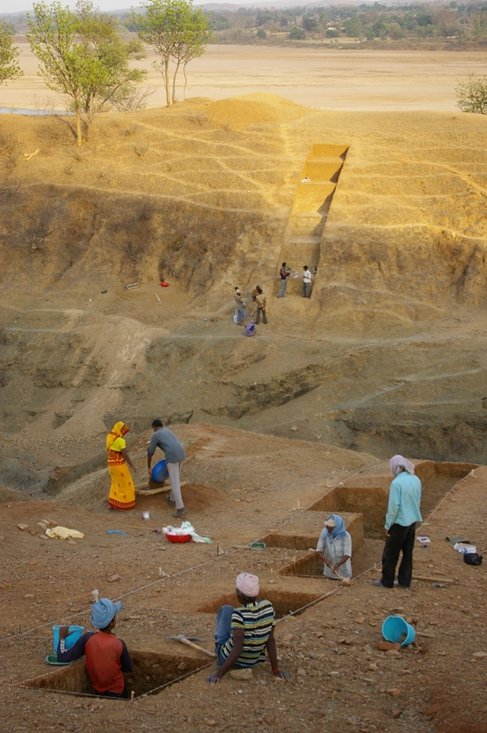Early humans appear to have survived the eruption of a supervolcano 74,000 years ago and the volcanic winter that followed, researchers have said. By studying stone tools at an archaeological site in India, researchers found continuous occupation from 80,000 years ago, raising important questions about our migration into east Asia and Australia.
Mount Toba is a supervolcano on the island of Sumatra, Indonesia. Its caldera forms what is now Lake Toba—the largest crater lake in the world. Following its eruption, there is thought to have been a volcanic winter, with temperatures plummeting for many years.
This eruption—the biggest on Earth in the last two million years—coincided with early human migration out of Africa and into Asia. What impact this event may have had on these people has been of much interest to scientists.
It was thought the eruption would have wiped out any humans that had made it this far, setting back mankind's eastward migration. It has also been suggested that it created a population bottleneck in east Africa and India, with some going as far as saying it almost pushed our species to the brink of extinction.
However, evidence is increasingly suggesting this is not the case. In 2017, researchers published evidence to show humans were present on Sumatra by between 73,000 and 63,000 years ago, just after the volcano erupted. A study published the following year also suggested that humans in South Africa were thriving in the period that followed Toba's eruption.
Humans are believed to have left Africa in multiple waves of migration starting around 175,000 years ago. It is thought they left northern Africa and traveled to the Middle East before their paths split, with one group heading to Europe and the other into Asia. From here, they are thought to have moved through India and into Thailand before making it all the way to Indonesia and Australia, around 65,000 years ago.
In the latest study, published in Nature Communications, researchers led by Chris Clarkson, from the University of Queensland, Australia, examined stone tools found at a site in Dhaba, in the Middle Son River Valley, Central India.
Their findings show humans arrived at the site at least 80,000 years ago, and remained there until at least 48,000 years ago. At this point there was a shift in technology towards smaller tools. Researchers found there was no disruption in stone tool production, suggesting the site was continuously occupied. Had the eruption at Mount Toba impacted this population, there would have been a gap in production. This suggests the eruption did not disrupt the flow of early humans leaving Africa.

The team also found the stone tools at the site share characteristics with those in Arabia from around 100,000 years ago, as well as those found in Australia, when the first humans are thought to have arrived there 65,000 years ago. This shows technological continuity moving from west to east over time, suggesting a human migratory path. The team concludes that Dhaba appears to have been an "important bridge linking regions with similar archaeology to the east and west."
Kira Westaway, from Macquarie University in Australia, was lead author on the study identifying humans in Sumatra at the time of the Toba eruption, but was not involved in the latest research. Commenting on the findings, she told Newsweek: "The Toba super-eruption has long been a milestone in the Asian archaeological record as research in this region tends to position itself around this event. Were humans there before it? Did they persevere through it? Did they survive after it?
"Many sites have claimed to have evidence for human survival through this eruption event but none at this location in the epicentre of the event nor on this timescale—an 80,000 year record of human presence right through 'the eye of the storm.' This brings up so many new questions—how did they survive? Was the eruption not as catastrophic as first thought? Were humans more adapted to survive large events than we give them credit?"
Westaway said the results provide evidence of timing and technology that supports the idea of an early exit from Africa and early arrival in Australia. She said the paper "finally connects the dots between India, southeast Asia and Australia for modern human dispersal," adding that it is "the most convincing evidence of human presence through the Toba event right in the Asia locality—rather than in South Africa—and suggests that the event wasn't as catastrophic as first thought. I think it's time to lay the 'human bottleneck' theory to rest."

Uncommon Knowledge
Newsweek is committed to challenging conventional wisdom and finding connections in the search for common ground.
Newsweek is committed to challenging conventional wisdom and finding connections in the search for common ground.
About the writer
Hannah Osborne is Nesweek's Science Editor, based in London, UK. Hannah joined Newsweek in 2017 from IBTimes UK. She is ... Read more





